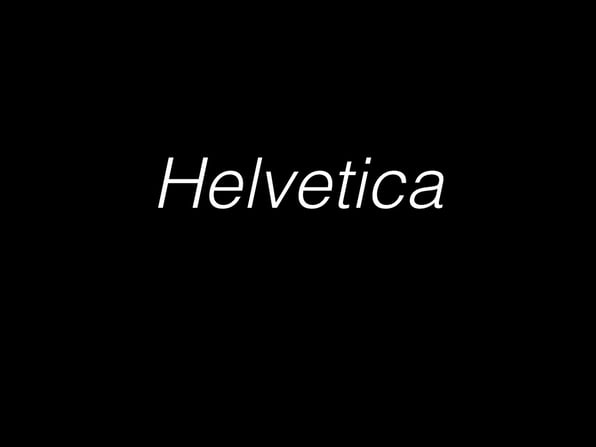Helvetica – the Font Still Impacting the World

If you subscribe to Netflix, you may have come across some of their unique documentaries on file. If you’ve continued to scroll past one such documentary entitled Helvetica, we’re now about to make our case as to why you should spend the next 90 minutes watching it.
Like the font it’s named after, Helvetica worms its way into your subconscious, revealing a deeper texture that holds an endearing sensibility. Made in 2007 by director Gary Hustwit, Helvetica chronicles the life of the font from its inception in the 1950s to its near ubiquitous presence in our lives today. Through interviews with graphic designers around the world - some champions of the font, others vehemently against it - Hustwit uses Helvetica to frame a more general take on graphic design, typography, and global visual culture and how it shapes our world.
Helvetica's Origin Story:
As explained in the documentary, Helvetica was conceived in 1957 by Max Miedinger and Eduard Hoffmann, two Swiss type designers working in the Haas Type Foundry in Münchenstein, Switzerland. The goal with the creation of the new font was to reflect the newfound idealism in graphic design, a movement that was gaining traction at the time in the industry. Miedinger and Hoffmann were looking to create a rational, clear typeface that could be applied to a number of different areas from science to business to everyday signposts.
The Rise of Helvetica
The new font, eventually named Helvetica, was a boon to designers and their clients in the 1960s. Brands looking for a new identity during that time fell in love with Helvetica, having been burdened far too long with increasingly zany fonts and dated scripts. Helvetica offered them a crisp, simple, and modern take on their company - one that told consumers they were efficient and accessible. For example, the IRS tax forms are in Helvetica - an attempt to make one of the more disliked government agencies appear more open and human.
Helvetica in Everyday Life
Examples such as the IRS’ appear throughout the film, and seeing how common Helvetica has become in the everyday world is one of the best parts of the documentary. It's simply everywhere (and you probably don’t even realize it)! From storefronts to billboards, New York Subway signs to magazine ads, and can even be found in airline branding, on space shuttles, and in supermarkets. The list is endless. Even our warehouse is lined with brochures, packaging, direct mailers, and business cards flaunting the font.
The Impact of Helvetica on Design and Communication
Ultimately, Helvetica leaves us with an interesting narrative about the life of the popular sans-serif typeface, and poses a few critical questions: What role does font selection play in graphic design? Is font itself expressive, or is it simply a means to convey information? What impact does graphic design have on contemporary visual culture? It’s an intriguing, well-made film that deserves to be in the Netflix queue of any graphic designer.
Helvetica offers a captivating narrative of the iconic sans-serif typeface, leaving viewers with a newfound appreciation for its impact on design and visual communication. Whether you're a seasoned graphic designer or simply curious about the world of printing and typography, Helvetica is a must-watch.
Discover More with Our Expert Design Services
Ready to explore the fascinating world of design further? Contact us today to discover how our expert design and printing services can bring your vision to life.
